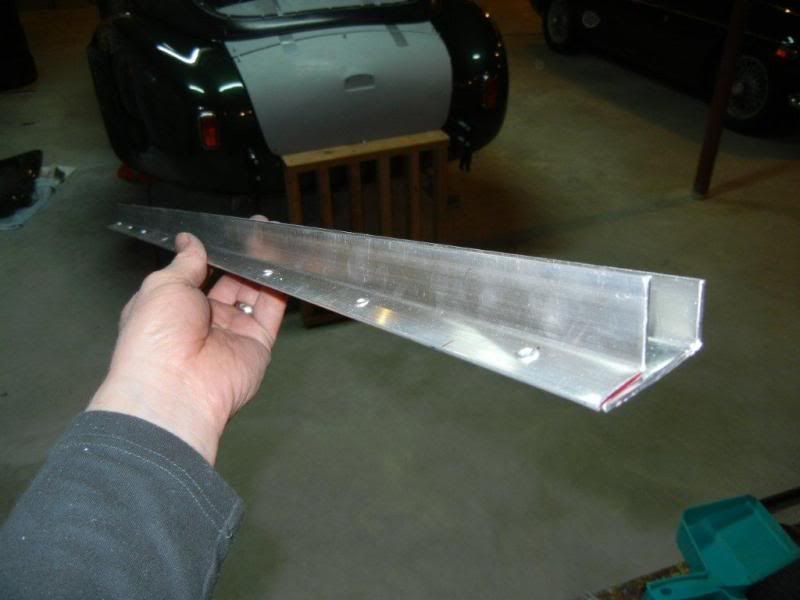The thing that concerned me most about the screen design was the formed section of aluminum channel at the rear of the screens. I did a bit of google searching on this topic and found that the Locost guys have a cool way of doing it that utilizes a permanent marker (sharpie), a propane torch, and a piece of wood that slots in to the channel opening cut to the profile you wish to shape the channel to. Here’s the link to the Locost builder’s method that I borrowed:
http://www.locostusa.com/forums/view...t=6299&start=0
Basically, using the sharpie, you put some scribbly marks on the outside of the channel in the area you want to form and heat the channel from the inside. When the marks fade and disappear, the aluminum is annealed enough to form. I took it kind of slow and ended up annealing the channel a extra time or two to minimize the wrinkling. It takes a bit of trial and error. Here are my pics of the process:

You can see the marks starting to fade here:
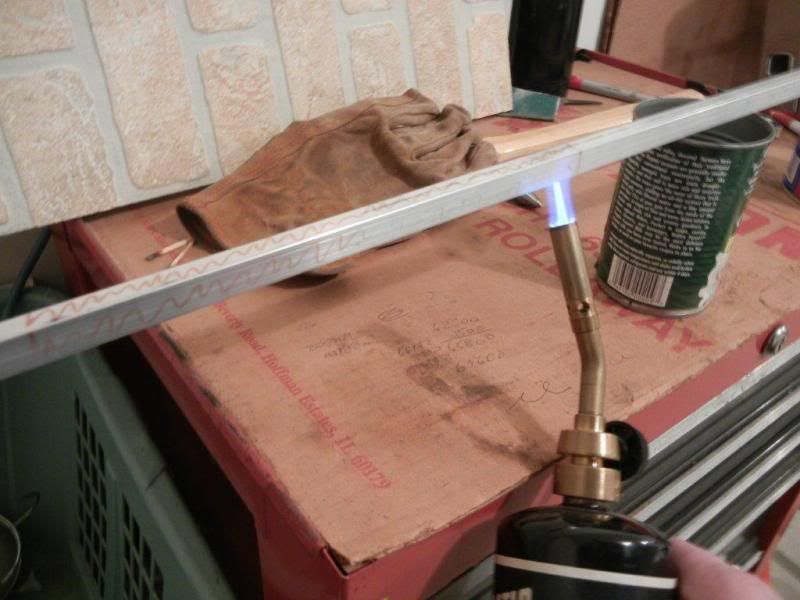

After I was satisfied with the forming of the upper rear channel radius, I set off using my cardboard pattern to guide me in making the remainder of the frame. Here you can see some of that process. To make the angle bends, I just cut out “V” sections in the flange of the channel and bent to the desired angles:
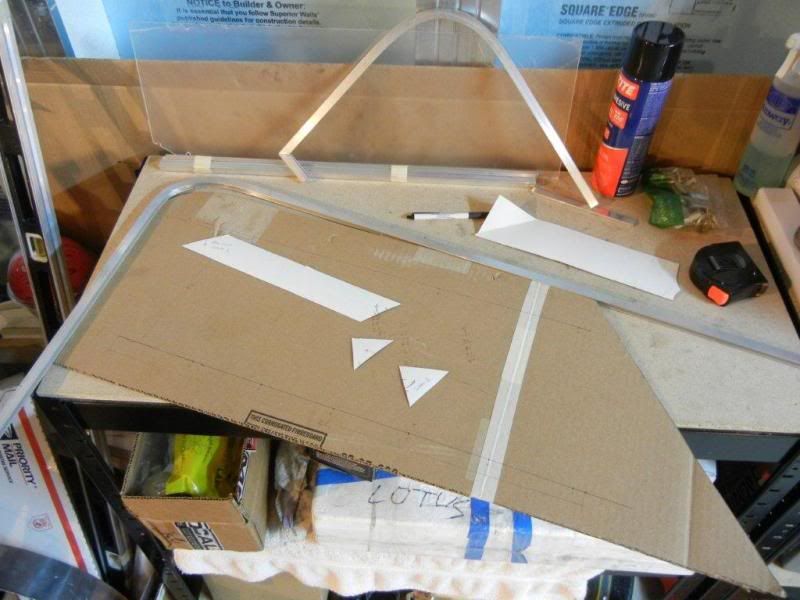
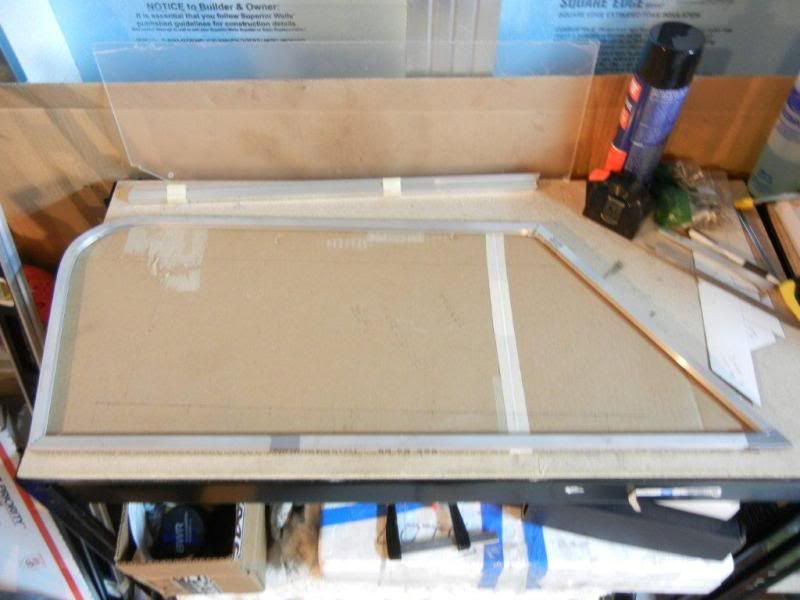
After finishing both LH/RH frames, I used the frames to trace a cut-line on the piece of polycarbonate. I then used a fine-tooth blade on a jigsaw to cut out the main window panel. It cut like butter.
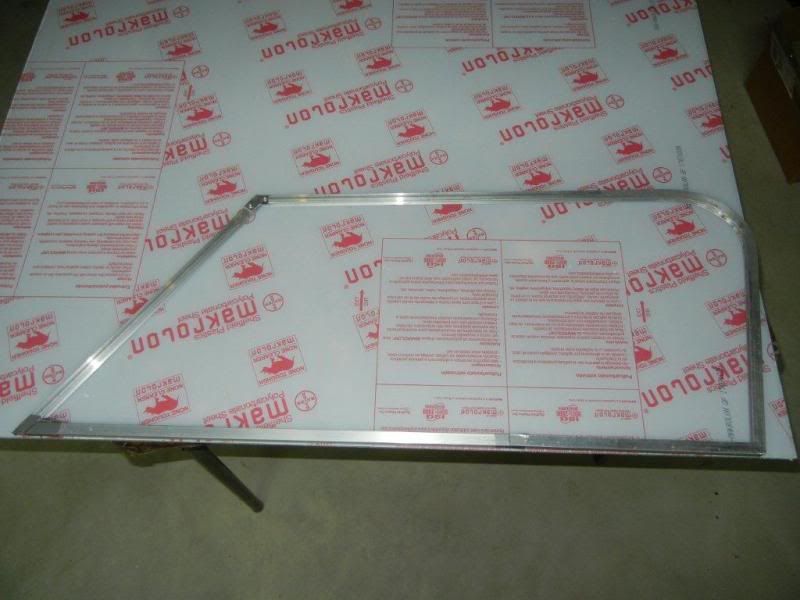
I then measured and cut the hole for my sliding window panel as well as the sliding panel itself. I drilled holes in the frames and the main window panel for attaching the two together with No8 machine screws.
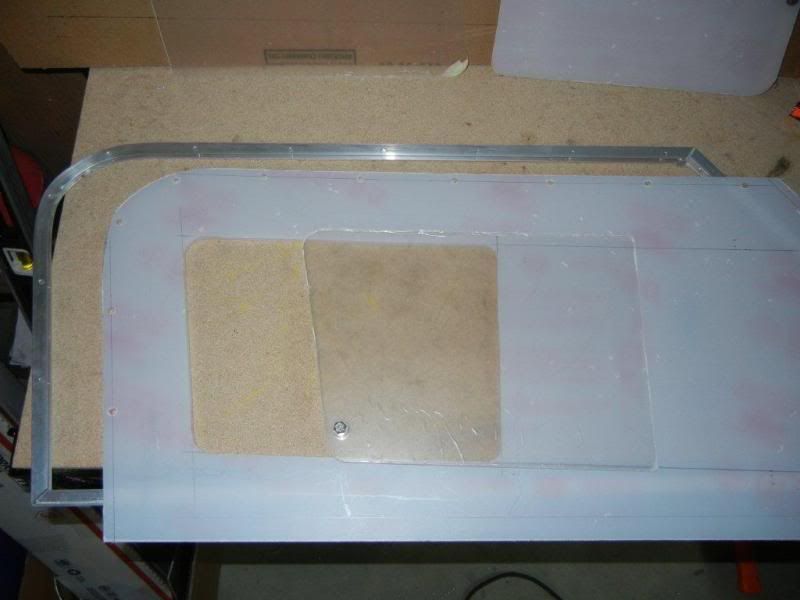
This photo shows the 1/8”x ½” and 1/16”x ¾” stock for the sliding window tracks. The 1/8”x ½” piece gets sandwiched between the 1/16”x 3/4” piece and the main window panel to create a “track” for the sliding panel to slide in.
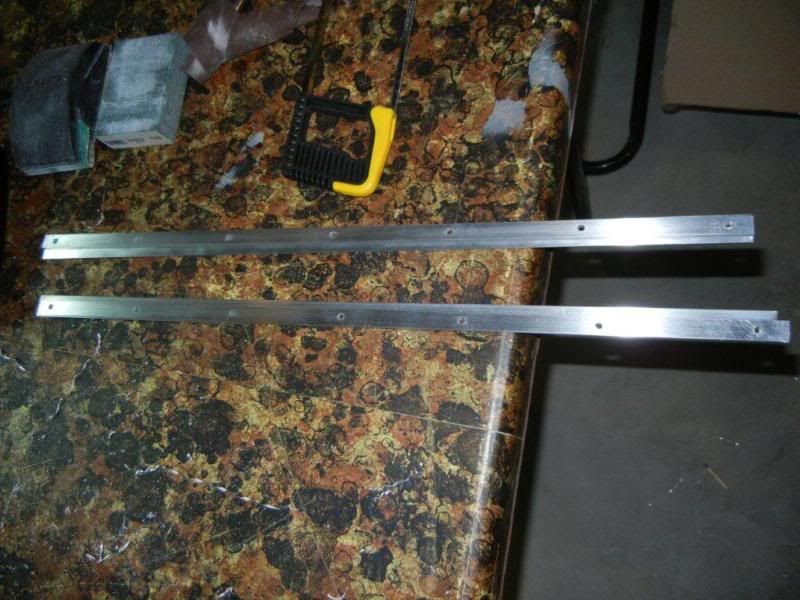
This next photo shows the two pieces of 1/16” sheet that was cut and bent to form the base of the screens. This piece also provides a flange for anchoring and attaching the screens to the top of the door.

